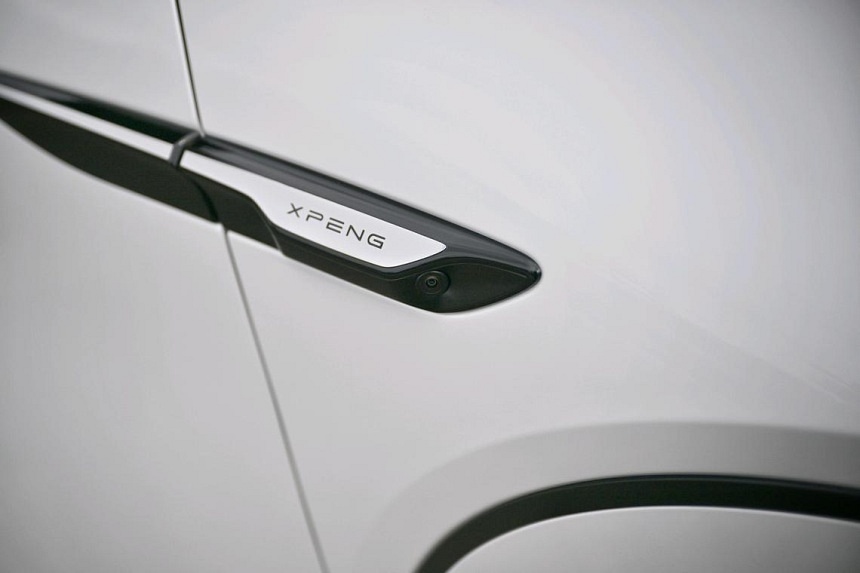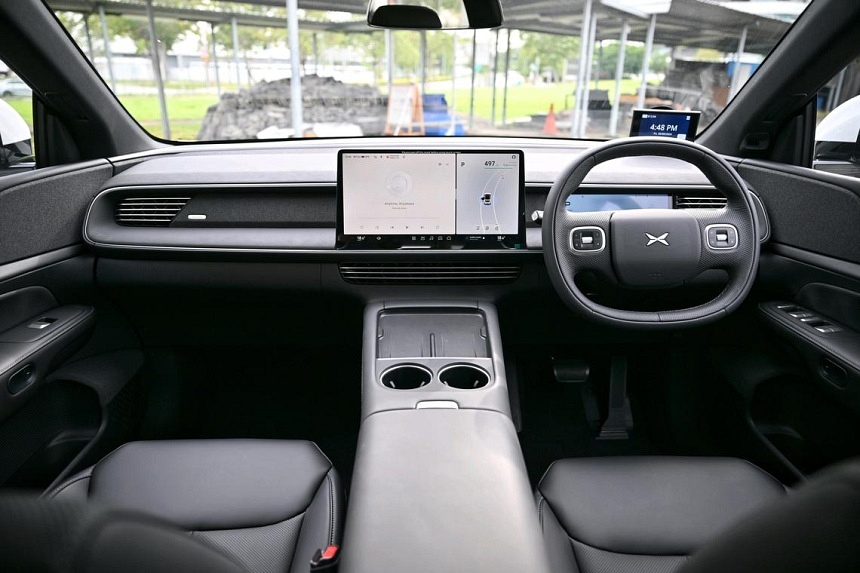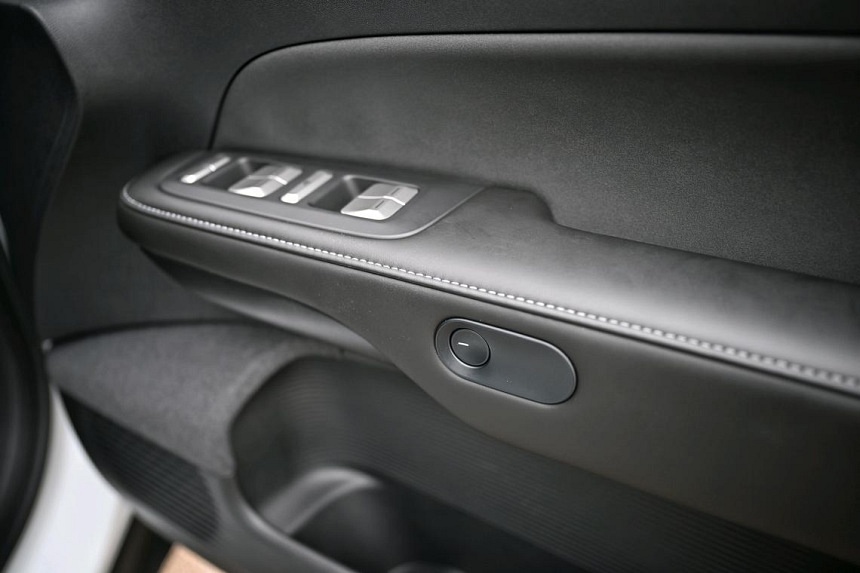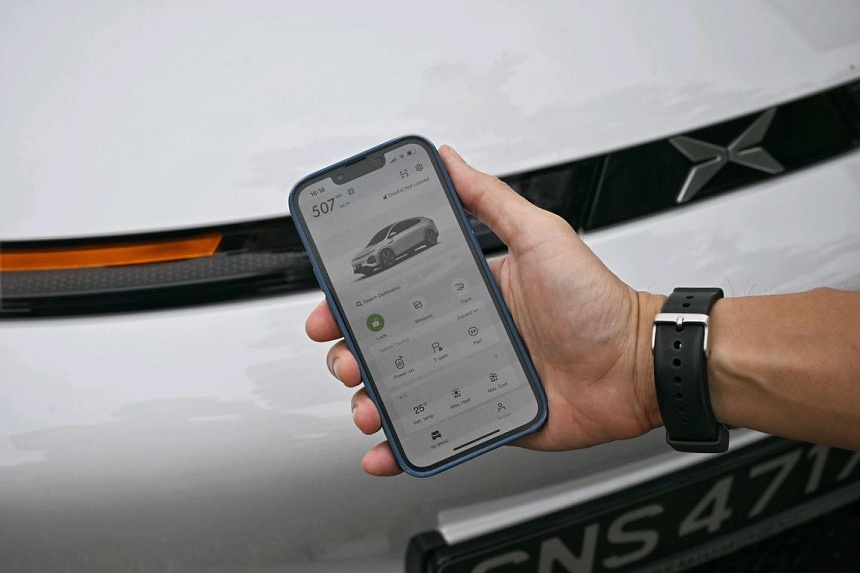SINGAPORE – A man walks up to the Xpeng G6 as I am about to drive it out of the parking space, points at the car and asks: “This one good or not?”
He is not the only one curious about the G6, which is the Chinese electric vehicle (EV) brand’s first model for Singapore.
Founded 10 years ago, Xpeng is the eighth and latest EV car brand from China to be sold in Singapore. It is also likely the one that EV fans are most curious about.
Despite its relatively small sales numbers – Xpeng sold just over 140,000 cars worldwide in 2023, nowhere near BYD’s three million units – the brand is regarded by many as one of three that can match Tesla when it comes to autonomous driving capabilities and battery technology.
The other two are Chinese EV-makers Li Auto and Nio, which have not made their foray into this part of the world yet.

The G6 is a mid-sized sport utility vehicle (SUV), almost identical in size to the Tesla Model Y SUV.
Among other things that come to mind during the test drive, I wonder about how to pronounce the brand’s name: “X”, as in the letter, is straightforward enough, but should it be “peng” as in Mandarin for “friend” or Hokkien for “ice”?
Just to be clear, it is pronounced “axe pang (like hunger pang)”.
The technology in the Xpeng is impressive. The car’s sensors can differentiate an approaching human being, like that man I meet at the carpark, from a bicycle; and a continuous lane marking from a dotted one. It can even tell which way a stationary vehicle is pointing and recognises if the indicators of an adjacent car are flashing.
The discreet badge on the front fenders houses a camera directed at the kerb, helping the driver to navigate tighter corners.
Whatever the car is “seeing” can be presented graphically on the centre touchscreen and the display directly in front of the driver. The data feeds the G6’s computer to power its suite of assisted-driving functions.
In adaptive cruise mode, even during morning peak-hour traffic, the G6 conducts itself like an experienced human driver, picking up speed and slowing down smoothly in response to changes in traffic conditions. The driver has to hold the steering wheel, though, as full autonomous driving is not allowed legally.
If the car detects that it is edging away, it will sound an alarm through the speaker embedded in the driver’s headrest and try to gently nudge itself back to the middle of the lane. This can be irritating if the driver is doing so to get a better view of the traffic ahead. Fortunately, it is easy to deactivate the warning.
The auto-parking feature is a true one-touch experience. Once the driver pushes a button on the touchscreen to confirm the parking space that the car has spotted, the system will wiggle the car steadily into the lot without any lurching.
Overall, the Xpeng’s assisted-driving system seems to be better calibrated in its responses than that of some other cars tested recently.
On many levels, the G6 also does things a little differently from some other Chinese EVs.
This is despite the car kind of looking like many other EVs on the outside, with smooth curves and slim LED lights.

For one thing, the design of the interior is exceptionally restrained. For those who find the all-black interior a bit too sombre, there is a version in a lighter colour.
The graphics on the centre touchscreen are crisp, well presented and very responsive.
Pairing my iPhone wirelessly to the system to run Apple CarPlay is easy. But mysteriously, the car is unable to do so again a day later. I turn to using a cable connection, which works flawlessly.
Xpeng’s smartphone app works as the digital key, which unlocks the car automatically, so there is no need to take the physical key along. The main user can appoint up to five other smartphones to possess this function. The operation is as slick as BMW’s system.
There are generally no quirks about cabin layout, other than the location of the hazard light button – it is not on the dashboard, but on the ceiling near the rear-view mirror.

Areas that are more visible and see more contact are made with soft-touch materials. For less prominent spots, such as the lower half of door panels and the sides of the boot, unyielding plastics are used. They may be more hard-wearing, but do not feel as premium.
To conserve energy, air-conditioning for the front passengers can be set to activate only when there is someone on the seat.
During the test drive, which covers 265km, the average fuel consumption is 14.1kWh/100km, better than the claimed 17.5kWh/100km. The Long Range version tested is said to be able to cover 570km on a single charge – 135km more than the standard version – but is also pricier by $15,000.
Even though it has plenty of instantaneous acceleration that is typical of EVs, the G6 is not a car to be driven in anger.
Being quite softly sprung, the car can bob a bit when driven over undulating surfaces. While there is ample grip, this is a car that is at its best when driven smoothly – just like how it behaves in the semi-autonomous driving mode.

Xpeng G6 Long Range
Price: $234,999 with certificate of entitlement
Motor: Permanent magnet synchronous with 87.5kWh nickel cobalt manganese battery
Transmission: Single speed
Power: 210kW
Torque: 440Nm at 1,000-4,700rpm
0-100kmh: 6.2 seconds
Top speed: 200kmh
Efficiency: 17.5kWh/100km
Agents: Xpremium BEV
Rating: ★★★☆☆
Comparable considerations
Tesla Model Y
This is the G6’s key rival, with nearly identical dimensions. Subjectively, Tesla’s almost amorphous design is less attractive, and its popularity on Singapore’s roads plays against the novelty of the G6’s fresher design.
However, the Tesla Rear-Wheel Drive is cheaper ($212,458 at latest COE price) and has slightly more range (455km instead of 435km), while the Long Range model is quicker (five seconds to 100kmh from rest, instead of 6.2 seconds) but a bit pricier ($238,551 with COE).
Hyundai Ioniq 5
A distinctive-looking EV with well-sorted dynamics. It may be slightly shorter and narrower overall than the Xpeng, but the Hyundai has a longer wheelbase, so it will be no less spacious inside. The entry-level Category A COE version ($189,800 with COE) is no match for the G6 in performance and range (384km), but the mid-tier version ($218,750 with COE) with 507km range looks like a credible alternative.


